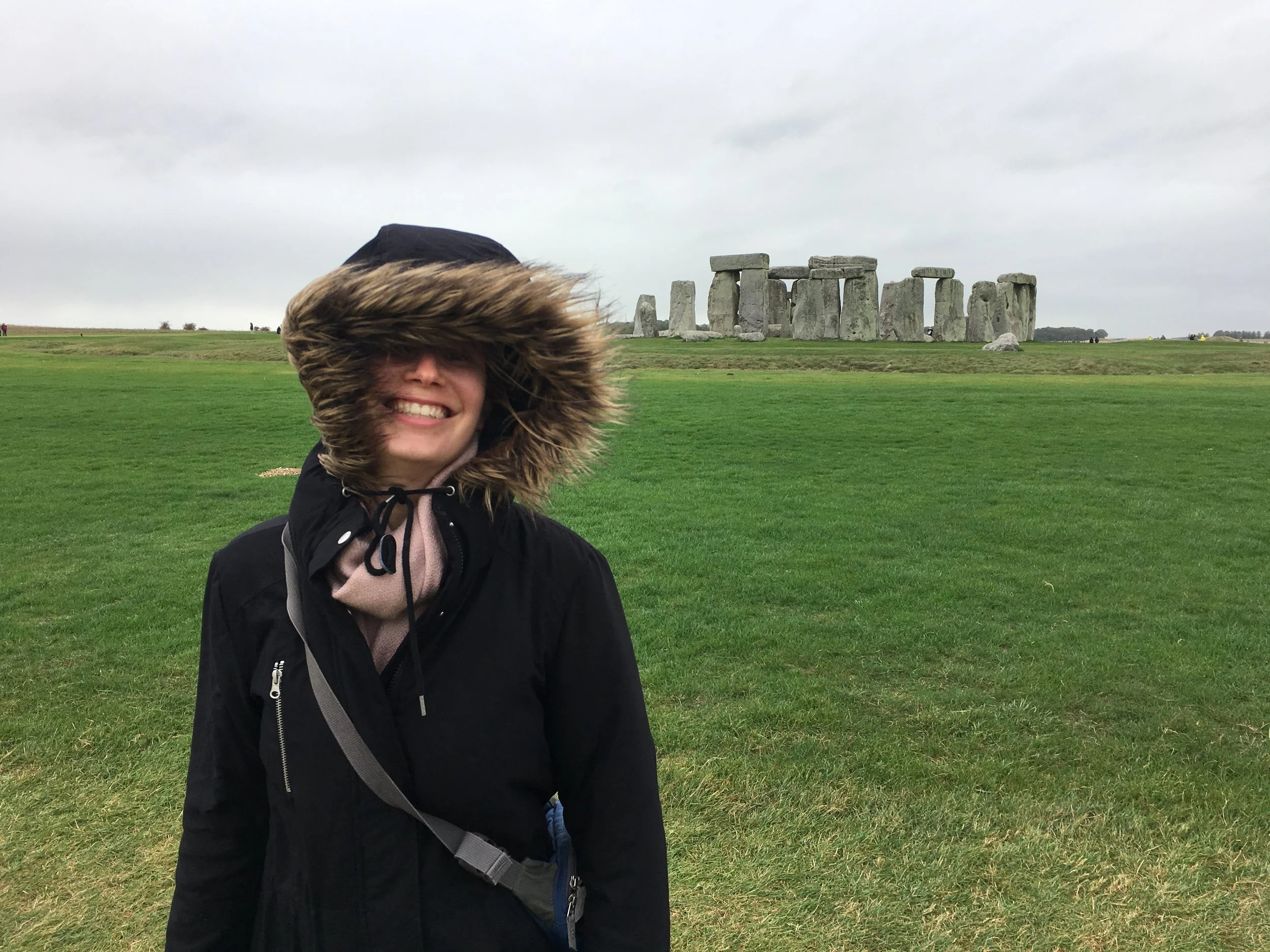English Countryside I: Stonehenge, Lyme Regis, Studland Bay
We planned a mini road trip with Will’s parents in mid October through the English countryside. Full disclosure here, Will took the lead with plotting the route…and he absolutely nailed it.
We started with an iconic English landmark: Stonehenge. Growing up, we had a blown up photo of Stonehenge in our living room. For me, the mere image feels familiar. Nostalgic, even. So to see this culturally significant monument in person was truly awe-inspiring.
However, I never really knew the meaning. Fortunately, at the site there’s an exhibit that explains the significance.
Stonehenge consists of a ring of standing stones reaching roughly 13 feet tall. The stones are piled in a manner that’s not naturally occurring. It’s believed that the structure first served as a burial ground during the Neolithic and Bronze Age. To put things in perspective, deposits of human bones date back to 3000 BC.
Upon nearing Amesbury, it felt slightly anti-climatic, with the stones piled in a massive field on the side of the main thoroughfare.
It all felt very distant from the road. But, there’s an option to take a bus or walk from the museum and visitor’s center. It was painfully windy out, so we opted for the bus.
Although the stones have a protected rope, you’re still able to get relatively close.
And I’ll admit, the feeling of being in such a nearby proximity to the monument took me by surprise. It was awesome.
We find one of the many differences of traveling domestically verse internationally is that tourist centric places are not as apt to gouge you. To warm up, we stopped at the cafe in the visitors center for a few flaky pasties, traditional savory English pastries. We all agreed they were delicious and so reasonably priced, given our surroundings.
That evening, we headed to The Wheatsheaf Inn in Wilton.
It’s a charming family run inn from the 17th century. And the young couple does legitimately everything. Reception, cleaning, cooking breakfast.
When we arrived, we were given two option for breakfast the following morning: The full English breakfast or the full vegetarian English breakfast.
Needless to say, I felt that we were in the countryside.
We arrived late afternoon, and took a walk around the market town, Wilton.
Located in the Cotswalds along the River Wylye the small town has a population of under 2,000 people.
There’s a church in the town center that dates back to 1100.
And apparently it was also the weekend for a fun fair, or a traveling carnival of sorts.
We didn’t think there would be much to the town, but we also walked by a manor, The Wilton House, which was assessed by The Doomsday Book in 1086.
However, the real highlight was back at the Wheatsheaf. There weren’t too many options in town for dinner, so we opted to have a couple pints and dine in.
The following morning, Will and I woke up early for a rainy jog.
Before our promised homemade full English breakfast.
From there, we headed to Lyme Regis.
The town is in West Dorset, situated on the English Channel coast.
The cliffs along the beach are known to hold fossils.
It’s an area that appears in several notable literally classics. Jane Austen wrote about the harbor wall, dubbed, “The Cobb.”
Today, the harbor, albeit windy, exuded a tremendous charm.
To me, it felt that the entire scene was in pastels. It deeply reminded me of Cape Cod.
We enjoyed walking around the narrow streets, now clearly setup for beach holidays, with fish and chip and ice cream stands along the water.
After, we drove to Studland Bay, a village in the county of Dorset in southern England.
Studland Bay is one of England’s most famed coasts and stretches for three miles along the Isle of Purbeck.
There are designated trails through the sand dunes and woodlands.
On our way to our accommodations that evening, we had to pull off one more time when we spotted the Corfe Castle.
It’s the perk of having a car, to stop when anything looks intriguing.
The castle dates back to the 11th century, but we were more interested in the beautiful walking paths surrounding it.
That evening, we stayed at The Crown Hotel in Blanford Forum.
It was a more of an operation than the Wheatsheaf, but both establishments held a certain charm in their own right.
We got a draught at the pub in the hotel.
Which, quickly was becoming a nightly ritual.
And enjoyed a nice dinner there as well—they have a stellar restaurant.
I’d come to quickly appreciate our evenings, especially in these quintessentially English inns.
The following morning we had breakfast at the hotel and discovered a garden nearby.
Perhaps I don’t search for it as keenly at home, but when traveling, it feels so much easier to find simple beauty everywhere.
We loaded back in the car and we were off. Stay tuned for part two!




















































